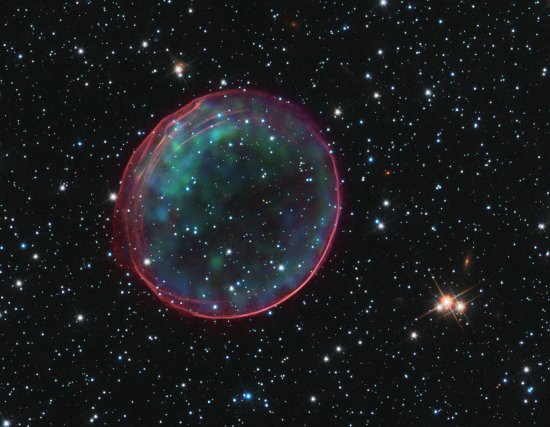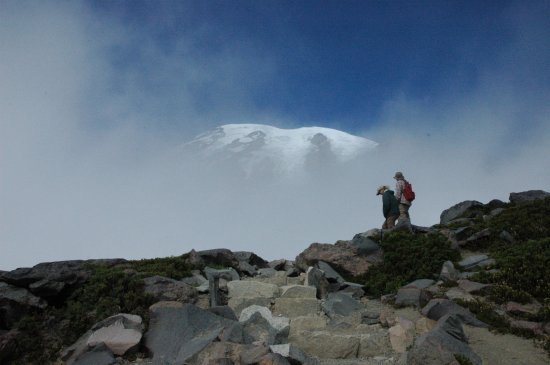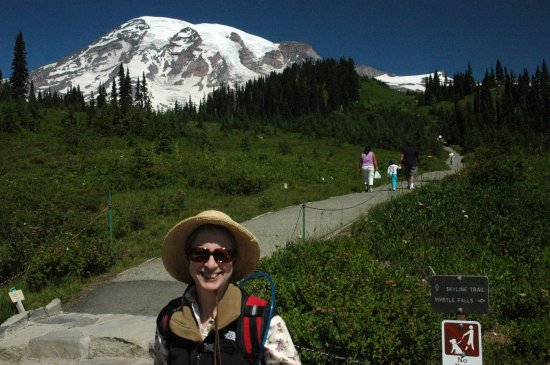Tag: sightseeing
Ventana Canyon
An evening pause: Hiking in the Santa Catalina mountains overlooking Tucson, Arizona. Amazing shots of wildlife as well.
Frazil ice
Walk to the top of the Leaning Tower of Pisa
Angels Landing hike – Zion National Park, Utah
An evening pause: This video doesn’t quite get you to the top, but it definitely gives you a feel for the spectacular nature of the hike.
How to play in the desert
Longest zip line ride in the world
The last remant of a supernova
Time for some astronomical sightseeing! This image, produced from data taken by both the Hubble Space Telescope and the Chandra X-ray Observatory, shows what astronomers call a supernova remnant. The bubble, located in the Large Magellanic Cloud 160 thousand light years away, is thought to be 23 light years across and expanding about 11 million miles per hour. It is thought that the supernova itself took place around 1600. That we have no record of it is probably because it was only visible in the southern hemisphere, where few records of such events were being kept at that time. More here, including the image using only Hubble data as well as a video animation that is quite stunning.

The leaning tower leans less
Engineers to the rescue! The Leaning Tower of Pisa no longer leans as much as it used to, but the lean it has is now expected to last for at least another 200 years.
Engineers to the rescue! The Leaning Tower of Pisa no longer leans as much as it used to, but the lean it has is now expected to last for at least another 200 years.
Hang gliding in upstate New York
Winter overnight hike
Sightseeing on Mars
Those who visit this website regularly know that I repeatedly post images from the various Mars orbiters and rovers. I do this not only because the images have scientific interest or that they are cool, but because it is simply fun to sightsee, even if it is done by proxy using a robot many millions of miles away. Here are two more images of the sights of Mars.
The first is a mosiac image of a small crater that the rover Opportunity strolled past on November 9 in its four year journey to Endeavour Crater.

What always amazes me about the images that Opportunity has taken as it travels across the Martian desert is how totally lifeless this desert is. You would be very hard-pressed to find any desert on Earth like this. On Earth, life is everywhere, even in deserts with their harsh environment. Moreover, life on Earth has reshaped the surface drastically. Environmentalists like to whine about the havoc humans wreck on nature, but the truth is that all life does this continually. Plants and trees help soften the terrain. Animals (not just humans) mold the surface to their needs.
On Mars, however, all one sees is wind-strewn sand across barren bedrock. What this suggests is that, if there is life on Mars, it is well buried, not very visible, and possibly quite rare. It will thus be difficult to spot.
The second image is another one of those Martian collapse features, where some form of fluid flow under the surface washed out the supporting material. causing the surface to eventually collapse. In this case, however, the collapse left at least one natural bridge. Based on the scale (25 cm = 1 pixel), this bridge is about 80 feet wide and 100 feet long. (To calculate its height requires more mathematical skills than I have.)
Boy, wouldn’t this be a magnificent thing to hike under and across!

Flash flood
Thor’s well
Machu Picchu from above
Stairway to heaven Hawaii
Slot Canyon
An evening pause: A walk through an unidentified slot canyon somewhere on the Colorado Plateau in the Navaho reservation.
Knife’s Edge trail on Mount Katahdin
An evening pause: How about some more hiking on the edge of the world? This is the Knife’s Edge trail on Mount Katahdin, Baxter State Park, Maine.
Engineering in the Columbia River Gorge
Because yesterday’s hike up Eagle Creek to Tunnel Falls (see picture below) was particularly long, 12.5 miles, I took a break from posting when I got home. Today (Monday), however, was a more easy-going day, as we did more ordinary tourist stuff, driving from place to place with only short strolls at each stop.

The most fascinating tourist stop of the day was by far Bonneville Dam. Just as the security guard at the gate let the car in front of us through, her phone rang. When she was finished and came up to our car, she explained that we would have to wait about a half hour before going to the visitor center, as they needed to open the swing bridge so that a barge could go through the locks. At first I thought this was very unfortunate timing. In the end, it turned out to be fortuitous indeed. We parked at the viewing area above the locks and watched five barges, tied tightly together as a unit and pushed upstream by a tug, slide gently into the lock with barely inches on either side. Neither Diane or I could believe how little spare room the tugboat captain had to pilot this massive object. The gigantic downstream doors then closed (while I quipped that music from Star Wars should be playing) and the lock was quickly filled with water, raising the barges/tugboat up almost a hundred feet. The upstream doors than opened and the barge headed out. All told, the whole operation took less than 45 minutes.


We then took a tour of the dam’s first power station, with its ten turbines all in a row. Unfortunately, none were operating at the moment. Nonetheless, whenever I see places like this (such as when I visited Hoover Dam back in 2005), I can’t help but be reminded of the scene from the science fiction movie Forbidden Planet, when Walter Pigeon gives us a tour of the Krell underground machine. Unlike the Krell, however, it didn’t take millions of years for us to learn how to build such breath-taking big dams and power stations. We did it less than 150 years after the discovery of electricity!

The Columbia River Gorge
We’ve moved on from Mt. St. Helens to the Columbia River Gorge. Below is a shot of Vista House at Crown Point, looking east into the gorge. In the distance you can see Beacon Rock.

Today’s hike was short, a six mile loop starting at Multnomah Falls (620 feet total).

The falls and hike are probably among the most popular tourist attractions close to Portland. And since today was Saturday, there were a lot of people around. Nonetheless, the numbers quickly dropped as we worked our way up the trail, dropping to only a handful of people once we climbed past the top of the falls. The hike itself included a lot of waterfalls and babbling streams, but it also weaved its way through some impressive evergreen forests.

I find it sad how few people are willing to do the little extra work necessary to reach these beautiful places. At one point on our way down, we passed a family that was clearly discussing whether to continue. They had already climbed about 80 percent of the way up, but the father and mother were tired and seemed willing to stop. When the son (about 12) asked me how much farther it was to the top and I said it was only about 20 to 30 minutes, he was off like a shot, with the parents forced to follow, albeit reluctantly. My immediate thought was, “Go, kid, go!”
Angel Falls
Mount Huashan
An evening pause: Let’s take another hike in a place most people wouldn’t want to go. This time, to Mount Huashan in central China. This is a holy mountain with a temple at the top. To get there you need to climb up a lot of steps along an exposed ridgeline. Eventually, you must also put on a harness and do what is called the plank walk. Enjoy!
Mount St. Helens
Today we hiked almost ten miles around Mt. St. Helens, walking down to the shore of Spirit Lake (see below) as well as tromping about on the debris field just below the crater. I will have a long post on the experience tomorrow.

Today we hiked almost ten miles around Mt. St. Helens, walking down to the shore of Spirit Lake (see below) as well as tromping about on the debris field just below the crater. I will have a long post on the experience tomorrow.

Paradise Valley and Lakes
The sun was out, the sky was clear, and so today we did a short 6.5 circuit hike below Mt. Rainier, following the Lakes trail.

The sun was out, the sky was clear, and so today we did a short 6.5 circuit hike below Mt. Rainier, following the Lakes trail.

A cloudy day in Paradise
We were back at Mt. Rainier today, this time doing one short hike and one long one, totaling 8.6 miles. The short hike took us to the Grove of the Patriarchs, a small grove of thousand year old trees. The long hike took us up to 7200 feet elevation on the flanks of Mt. Rainier. Unfortunately, the mountain was shy today, keeping itself hidden behind clouds for most of the day. Near the top of the climb the clouds parted for about 30 seconds, and I was able to get a signal snapshot of it. Otherwise, we spent most of the hike in the mist, which was beautiful in its own way.


A day spent in Paradise
Diane and I spent today hiking the shorter trails near the visitor center at Mt. Rainier, in an area called Paradise. Below are two pictures to give you a feel. Tomorrow we start on some longer hikes, getting higher on the mountain. Later in the week we head to Mt. St. Helens.


